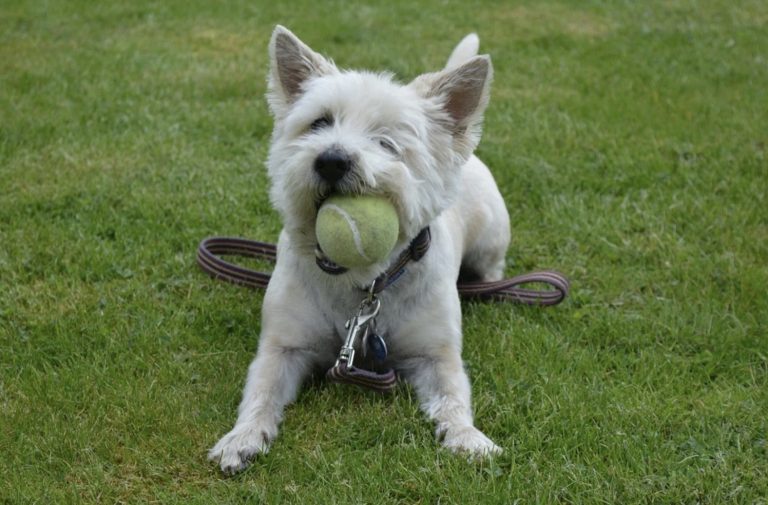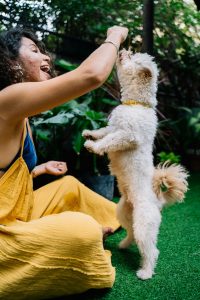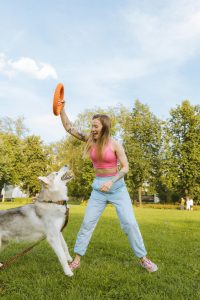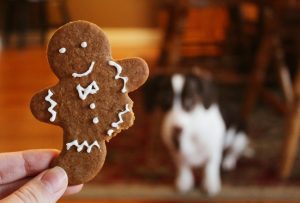There are many words your dog should learn and know. “NO” is one of them. It is quite an important word that improves the safety of your dog and your sanity. You must teach the meaning of NO and some rules around the house from the first day you get your puppy.
Now, we are not saying you should punish your dog. Being that I am a huge supporter of positive reinforcement training, I always try to use rewards only for modifying and teaching behavior.
But sometimes, you need to set boundaries and limits to what your dog can do. As I’ve written before, punishment works only when followed with a corrected behavior.
If you are teaching NO to your dog just to say NO, it will not work. Punishment, in this case, saying no, is not sufficient.
Rules for Teaching NO
Before we get to how to teach your dog NO, let’s set some ground rules. It is important to understand when and how you can use this command.
- Teach NO and use it only when your puppy is off-leash
- Use No in conjunction with a leash correction. Say the command just before you are giving physical correction
- Say NO with a normal volume, but with a firm and serious tone
- Do not repeat the command over and over again for the same behavior. If you say it multiple times, you are teaching your puppy to ignore the first word as a correction
- Effective No command should stop the inappropriate behavior and then be followed by praise
- Use the word NO sparingly and only when warranted
- If used frequently and ineffectively, the NO correction will not be useful in detrimental situations
- It is best that you use it for serious situations like stopping a loose puppy from running into the street or eating something dangerous from the ground
What is Your Task?
One of the big reasons why many people fail in dog training is because they fail to understand the task at hand. What is your goal with a specific training session? What do you want your puppy to learn and do?
The most important reason why you teach your puppy the word NO is for its own safety. For example, if your dog suddenly tries to run toward traffic. Telling him NO should stop him from running. Or if your dog is going to the litter box searching for a snack.
You need to understand that you should not have to yell at your puppy to get him to follow the command. Work with your dog until he happily responds to the command as to any other cue or command.
Yes, it is a basic command. But it will take your dog a while to master it.
The Challenge with NO
There is a reason why the command NO is challenging to teach. For starters, dogs respond more easily to actually doing something than to stop doing something. Asking your dog to sit and get a treat for that might be easier than to train NO. This is why I often suggest training emergency sit.
We, humans, often use the word NO. Dog trainers, however, feel that it is a negative way of training a dog. Dogs do not respond well to negative commands, negative training, and negative behavior.
Many dog owners make the mistake of yelling or constantly saying NO. This will hardly have any impact on your puppy. Instead, it might make matters worse.
The big challenge with NO is learning to use it at the exact second your dog thinks of doing something, and then following it with something positive and praise.
The essence of dog training is training your dog to do something alternative to his negative behavior.
How to teach your dog NO
There are a couple of methods you can use to teach your dog NO. Let’s try and explain them.
The Hand and Treat
For this method, all you need are some delicious treats in your hand and pocket. Here is how to do it.
- Start by calling your dog over and letting him see the treats in your hand
- As you are closing your hand, say NO. Let your dog lick and sniff the treats, but do not give him any
- When your dog gives up and backs away, praise him and give him treats
- Repeat several times until your puppy figures out he will get treats when he obeys the NO command
- Use the command with an upright stance and authoritative voice
- When your dog masters the previous steps, it is time for the final one. You want your puppy to pay attention to you, and seek permission from you. This time, give treats as your dog backs away and looks at you. It teaches your puppy that looking at you and establishing eye contact will get him treats
Treats on the floor
This exercise will help you if your dog picks up stuff from the ground. You are teaching your dog to obey while the treat is on the floor.
- Start by placing the treat out of reach of your dog
- Next, place the treat on the floor guarding it with your hand. Lift your hand until your puppy stops when you say NO, even if the treat is in the open
- Wait until your dog looks at you and then give the treat
This exercise will require patients and several repetitions, but working on it will improve your dog’s life and safety.







